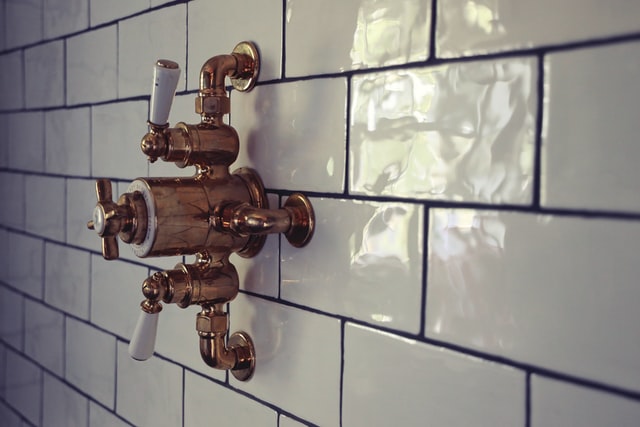In today’s world, many people prefer tile over carpeted flooring. On the other side, when the tiles age and lose their sheen, any dirt deposit becomes more visible. Cleaning your bathroom tiles should, on the whole, be simple and quick. Cleaning bathrooms in the traditional manner is time-consuming and exhausting.
Family members who use the restroom on a regular basis are at danger of illness from the filth. If you’re not careful, dirt may build up in your shower over time, creating a breeding ground for germs. The following are some helpful hints for cleaning shower tiles without washing them.
Table of Contents
Hydrogen Peroxide and Baking Soda
Baking soda and hydrogen peroxide are two ecologically friendly chemicals that are often used in our homes for numerous reasons. They are among the most readily available items in our houses that we may use to quickly clean our shower tiles. Both of these things are much less expensive than store-bought cleaners. Apply the paste to the stained tiles by mixing equal parts of both items. The mixture is fairly powerful, and it removes most stains off tiles, leaving them gleaming and polished.
Dishwashing Detergent and Vinegar
When it comes cleaning shower tile stains, vinegar is a miracle worker. Because of the vinegar’s acidity, any soap scum stains on the shower tiles will be removed swiftly. Spray the mixture onto the tiles using the spray bottle. Check that the solution has been applied to all of the stained tiles. Allow at least an hour for the solution to sit on the tiles before rinsing it away. The solution will remove all of the tile stains as if by magic.
Combine Vinegar and Baking Soda
Baking soda is one of our favourite and most recommended cleaning products. It not only gets rid of stains on tiles, but it also gets rid of smells. Allow the chemical reaction to take place by adding a few drops of vinegar throughout. Allow at least one hour for the solution to settle and the dirt to lift. Scrape off the dirt and rinse it clean with a hard brush. Make sure your tiles are completely dry to avoid mould and mildew.
Use Borax and Hydrogen Peroxide in Combination
When all other options have failed or aren’t producing the desired effects, hydrogen peroxide is your final choice. The results are great when using both hydrogen peroxide and borax as cleaning agents. Because of its alkaline nature, pour borax into the afflicted tiles abundantly and let it to rest for at least 5 hours. Then pour hydrogen peroxide into the same tiles for at least another 2 hours. Finally, use warm water to wash away all of the residue and grime. The gloss on your shower tiles will be restored.
Baking Soda and Bleach
You can make a powerful cleaning solution by combining bleach and baking soda. Apply the paste to the tiles and grout lines after it has been prepared. Allow the paste to dry completely before cleaning the tiles with clean water to remove any remaining debris. Always follow the manufacturer’s instructions when using bleach, since it might harm the porcelain tile’s protective covering.
Use Clorox Bleach
Bleach is a strong and powerful chemical that may be used to clean your tiles without scrubbing, despite the fact that it is abrasive. After all of the other methods have failed, it should be your final choice. The dirt will be easier to remove the longer it is left on the tiles. Allowing bleach to sit on your tiles for too long if it isn’t diluted with water might cause lasting harm. Bleach combined with hot water in a 1:4 ratio, on the other hand, may be an effective way to stop mould and mildew from growing again.
Using Bleach with Oxygen
Before beginning to use Clorox bleach, always use oxygen bleach first. Clorox bleach is a little gentler. Cleaning dusty and muddy grout using oxygen bleach is well-known. Nonetheless, unclean shower tiles may be cleaned with oxygen bleach without scrubbing. Combine three teaspoons oxygen bleach with a two-gallon pail of warm water. Scrub the filth from your bathroom with a little toothbrush before rinsing it.
Steam Clean Shower Tiles
You may utilise steam cleaning if your DIY solution isn’t working and you don’t want to use harsh chemicals. Scrubbing tiles, for example, is an arm-wrenching activity that steam cleaning technology has been devised to avoid. A steam cleaner works by spraying steam into the grout with high-temperature water. Before going on to the next, wipe on little sections until they’re completely clean. Rinse the dirty water off the tiles as quickly as possible to avoid it sinking back into the grout.
Resort to Chlorine Bleach
If you’re using chlorine bleach to destroy fabrics, however, use old cleaning clothes/towels. To prevent a build-up of solid bleach scents, open the windows and leave the shower door open. Chlorine bleach has a strong odour, so use it with care.
Never mix chlorine bleach with vinegar or ammonia-based solutions because dangerous odours might result. Chlorine Bleach should only be used after all other cleaning options have failed.
For generations, glass tile has been used to decorate indoor environment. Glass tiling created in stunning mosaics designs was utilized by the Greeks to decorate their bathrooms. For bathroom floors and shower surrounds, glass tile is still a cost-effective and fashionable solution.
Glass tile comes in various colours, patterns, and designs. It comes in three different colours: clear, semi-transparent, and opaque. It might have a sleek smooth finish or shine in the lighting.
The nonporous feature of glass tile makes it impervious to water, dampness, discoloration, and mould. It is sturdy and break-resistant, even though it is susceptible to scratching. Glass tiles are simple to keep clean since it doesn’t retain water, detergent, or dirt.
